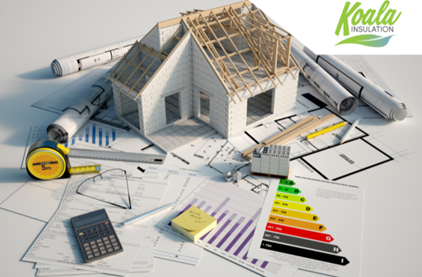Home Renovation Projects That Increase Your Return on Investment

What is one of the first things you consider when undertaking a new home renovation project? You may be the type of homeowner that prioritizes comfort and safety or you may be more dedicated to weighing the pros and cons of a DIY endeavor. Regardless of what your first step is, the cost eventually comes into play. However, the cost isn’t just about how much money you’re willing to spend on the initial investment – you should also be focusing on how this home improvement project can save you in the long run.
What is a Return on Investment?
A return on investment (also referred to as ROI) measures how favorable the cost to performance ratio is for an investment. You can calculate this by taking the Net ROI and dividing it by the Cost – when you multiply the result by 100%, you end up with the ROI percentage. To calculate the Net ROI, take the final value of investment (FVI) and subtract the initial value of investment (IVI). In many cases, you can work with a contractor to gather a more accurate assessment but knowing the calculations for yourself is a great tool to have in order to become more familiar with your spending and savings.
5 Common Renovations for Better ROI
Small Remodels
One of the most common misconceptions for home renovation projects is “Go big or go home.” You may believe that getting major renovations done can save you time and money because everything’s getting taken care of at once. However, minor remodeling in places like the kitchen and bathrooms instead can provide a much better ROI. It’s important to make functional changes first as opposed to focusing on appearance adjustments. Touching up the paint instead of a full redesign, upgrading necessary appliances, and consulting agents on buyer trends in your area can help you make more informed decisions on your updates. For example, in the southeast of the United States, basic remodeling jobs can recoup over 50% of the cost on average.
Replace Windows
Replacing the windows throughout the house is a great way to not only enhance your aesthetics but also improve air sealing, insulation, and durability. When taking the time to restore this area, you have several options that can improve ROI, with the highest return typically coming from vinyl or wood replacements. Wood replacements are most sought after in classic-style homes but vinyl is considered easier to maintain. Vinyl options also typically have a higher return on investment in the southeast! If you’re prioritizing energy efficiency to help save on energy costs, the Department of Energy has a guide to their Energy Star standards and essentials for making an environmentally friendly adjustment.
Air Sealing
Air sealing is used to reduce air leaks and improve the indoor air quality of your environment. By updating the air sealing, you can reduce heat loss through small gaps, cracks, and holes throughout the building envelope. These problematic openings can happen from general wear, natural weather damage, or pest infestations and can allow pollutants, allergens, and other outdoor air to flow freely through the home. While most homeowners can handle minor air sealing adjustments, it’s important to consult an industry expert to inspect for areas that could be hidden or taken for granted. Your windows and doors are the most likely culprits for air leaks but there can be openings in the walls, along the ceiling, in your attic, and many other places. The EPA estimates that having your home properly air sealed and insulated can save homes on average 15% on heating and cooling bills.
Insulation Material
It’s important to remember that insulation and air sealing work hand in hand – if you find that one material needs to be updated, it’s likely that the other should be evaluated as well. Insulation helps to regulate the temperature throughout the house and maintain climate control. By regulating heat transfer, the material keeps out unwanted heat in the summer and traps in desired warmth during the winter. This helps to reduce your heating and cooling costs, energy usage, and strain on your HVAC system. It’s also important to regularly evaluate the insulation throughout your home to find deteriorated material, check for air leaks, and keep an eye out for moisture or pest damage.
New Garage Door
Many homeowners that have been looking for ROI upgrades will be familiar with the suggestion to replace your garage door. But this may seem in direct contrast with our earlier tip to focus on minor remodels. However, it’s true that a new or upgraded garage door is going to be one of the best ROI adjustments you can make with an average of 80% of the cost – the cost will vary depending on your climate and weather patterns. Like window replacement, this upgrade focuses on both functionality and appearance without greatly affecting the cost of return. In cases where you can reuse the existing motorized opener, you’re more than likely to increase the recouped cost.
Consider Quality Investments with Local Experts
There are a number of home improvement projects you can take on that could potentially increase your comfort and safety – however, it’s also important to balance the savings it could offer. How much money are you sinking into the project and how can the improvement give back to your monthly expenses? Understanding return on investment choices can significantly impact the decisions you make when renovating your home. The good news is that ROI is a simple calculation that takes into account the value of the investment versus the cost.
At Koala Insulation of Cincinnati, our experts are well-versed in home improvements and insulation. Our experts will arrive with state-of-the-art equipment to thoroughly inspect your attic or home and identify any areas in need of repair or improvement. By hiring a Koala Insulation expert, you not only get to enjoy a more efficient home faster, but you also get to benefit from the years of energy savings that professionally installed insulation will bring. Call us today at (513) 906-8636!
Find Your Location


Get a quote


